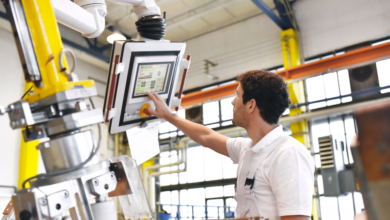From Automation to Augmentation: How AI Is Empowering Human Potential

The role of artificial intelligence in our everyday lives has evolved significantly over the past decade. Once seen purely as a tool for automation, AI is now stepping into a new phase: augmentation. Rather than simply replacing human tasks, AI is enabling individuals and organizations to extend their capabilities, amplify their creativity, and achieve outcomes that were once unimaginable.
This shift from automation to augmentation represents a pivotal change in how we approach work, communication, learning, and innovation. AI is no longer just about doing things faster—it’s about doing things better, with humans and machines working in harmony.
The Rise of Collaborative Intelligence
In the early stages of digital transformation, automation focused on streamlining repetitive and labor-intensive tasks. This allowed businesses to cut costs and improve operational efficiency. While valuable, this approach was limited to predefined, rule-based functions.
With the advancement of AI technologies such as machine learning, natural language processing, and computer vision, the scope has expanded dramatically. These systems can now interpret data, make contextual decisions, and learn from experience. As a result, they are no longer just tools to automate—they have become partners that augment human decision-making and performance.
In sectors such as healthcare, AI assists doctors in identifying medical conditions through advanced imaging analysis. In legal fields, it helps lawyers sift through vast amounts of case law with precision. In customer service, AI enhances responsiveness while allowing human agents to focus on empathy and problem-solving. The trend is clear: AI is making people more effective, not redundant.
Creativity Reimagined Through AI
Creativity is often viewed as a uniquely human trait, yet AI is now playing an important role in enhancing creative expression. Artists are experimenting with AI-generated music, visuals, and literature. Designers are using AI-based tools to generate complex visual patterns, layouts, and animations in seconds. Marketers are leveraging data-driven insights to tailor content strategies that resonate deeply with their audiences.
This collaboration between human intuition and machine intelligence is unlocking new creative possibilities. AI doesn’t diminish the role of the creator; it offers a canvas that adapts, evolves, and responds to human inspiration in real-time.
Video content, for instance, has seen a revolution through AI. Tasks like scriptwriting, editing, voiceovers, and visual enhancements are now automated, enabling creators to focus on storytelling and emotional impact. This has significantly lowered the barrier to entry for video production, making it accessible to solopreneurs, educators, and small businesses alike.
A growing trend in this space is the use of AI avatar tools that allow users to generate digital clones of themselves. These avatars can deliver messages, host tutorials, or create explainer videos without the need to appear on camera. The result is a seamless blend of personalization and scalability—ideal for everything from personalized ads to product walkthroughs.
Human-Centered Design and Personalized Experiences
As AI moves deeper into everyday tools, personalization is becoming more precise and impactful. Algorithms now adapt to users’ behaviors, preferences, and needs in real time. In education, for instance, AI-driven platforms provide tailored learning paths that support students’ unique learning speeds and styles. In e-commerce, product recommendations are more intuitive, leading to higher satisfaction and loyalty.
What makes these experiences truly valuable is the underlying human-centered design. Effective AI augmentation doesn’t overpower the user—it supports them. It offers options, insights, and suggestions while keeping the user in control. This thoughtful design fosters trust and ensures that technology empowers rather than overwhelms.
Whether it’s scheduling emails at the optimal time, analyzing engagement data for content creators, or refining workflows in project management, AI augments decision-making by offering smarter, faster, and often more creative alternatives. The goal is to enhance what humans already do well—and reduce the time spent on what they don’t.
Increasing Access and Reducing Barriers
One of the most significant benefits of AI augmentation is how it democratizes access to technology and opportunity. In the past, professional video production, marketing analysis, or personalized customer service required teams of specialists and substantial budgets. Today, AI makes these capabilities available to small businesses, freelancers, and creators around the world.
For instance, platforms like invideo AI are playing a crucial role in this transformation. Invideo AI offers a free ai video app that empowers users to produce professional-quality videos quickly and with minimal effort. This includes access to templates, drag-and-drop features, and automated editing tools—enabling even non-experts to create compelling video content. Apps like these are reshaping the content creation landscape by removing traditional barriers such as cost, technical skills, and time constraints.
This kind of accessibility is not just convenient; it’s transformative. It allows underrepresented voices to participate in the digital economy, educators to reach wider audiences, and local businesses to compete with global players.
The Evolving Skillset of the AI-Augmented Workforce
As AI becomes more integrated into daily workflows, the definition of valuable skills is changing. Technical literacy—once limited to coders and data scientists—is now becoming essential across all professions. But it’s not just about understanding how AI works. Equally important is the ability to collaborate with AI effectively, interpret its outputs, and make informed decisions based on its suggestions.
Soft skills like empathy, creativity, and adaptability are also gaining prominence. These human-centric traits complement AI’s analytical power and are critical in areas like leadership, innovation, and customer engagement.
Organizations are responding by investing in upskilling and reskilling initiatives. From online learning platforms to on-the-job training, the focus is shifting toward preparing workers for a world where AI is not a competitor but a collaborator.
Responsible and Ethical Use of AI
With great potential comes great responsibility. As AI tools become more powerful, concerns around ethics, transparency, and bias become more pressing. The data used to train AI models must be diverse and representative to avoid reinforcing existing inequalities. Users should be informed when interacting with AI-driven systems, especially in sensitive areas like healthcare, finance, and public services.
Augmentation also brings ethical considerations around digital identity and deepfakes. Tools that can replicate voices or create realistic avatars must be governed by strict policies to ensure consent and prevent misuse. Responsible development and usage will determine how sustainable and trustworthy AI augmentation becomes in the long run.
A Future of Empowerment and Partnership
We are entering a new era where the true promise of AI lies not in doing things for us but with us. It’s a future of collaboration—where machines learn from humans, and humans grow with the aid of intelligent tools. Whether it’s in the boardroom, the classroom, the studio, or the startup garage, AI is helping people push the boundaries of what’s possible.
As long as we design these systems to reflect our values, respect our autonomy, and support our ambitions, AI will remain a powerful ally in the pursuit of human potential. The transformation is already underway—and it’s making the future not just more efficient, but more creative, inclusive, and human.



